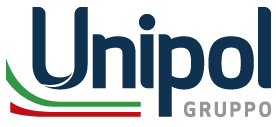Reputational & Emerging Risk Observatory
The structured control of reputational and emerging risks with a strategic and proactive approach aimed at anticipating trends to prevent emerging risks and seize new business opportunities.
Born in 2014 as an instrument for protecting Group reputation and strategy, the Observatory contributes to the creation and strengthening of reputational assets and strategic positioning over time, generating a competitive advantage and anticipating future trends in order to seize new business opportunities.
For this purpose, the Observatory makes use of a consolidated predictive model founded on the Meeting Point methodology, in collaboration with Ms. Egeria Di Nallo of the University of Bologna, and methods based on futures studies for adopting a forward-looking approach in the medium-to-long term.
The value brought to the Group by the Observatory is the guarantee of a window on the future, that is openness to signs of change in the various aspects of the external context – i.e. social, technological, environmental, political, providing a 360-degree overview of emerging trends in order to ensure adequate protection from related threats and, at the same time, seize new opportunities in advance and guarantee an effective safeguard of emerging reputational risks by ensuring a continuous alignment of the Group’s responses to the stakeholders’ expectations.
In fact, it is more and more important for companies to anticipate changes with a proactive and integrated approach because the speed of change and degree of complexity and uncertainty of future scenarios have increased significantly.
Anticipating change is essential to prepare the Group today for the risks and opportunities of tomorrow.
The analysis carried out by the Observatory is a process that has been developing over the years, that represents a training to the future and that constantly alternates between the identification phase of future signals, embodied in Macro Trends, the assessment of the Group’s responses and a continuous update and consolidation over time.
In 2024, the Reputation & Emerging Risk Observatory will be celebrating ten years in activity, during which it has grown, transformed and become richer, contributing to spreading within the Group the desire to learn about future scenarios and uncertainties. In 2014, we started analysing 360 topics with the idea of providing an all-round view of the external context. These topics stood as the basis for the identification of 10 initial Macro Trends, which ten years after have now become 17, distributed in 4 STEP dimensions. There are 43 topics to watch that have been identified since the establishment of the Observatory. Some of them have broadened the reference Macro Trend into which they merged, while others have given rise to new distinct Macro Trends. Finally, there are over 40 KPIs that are monitored to assess the evolution of Macro Trends over time and to subsequently verify whether the predicted phenomena have actually developed and become relevant.
Map of interconnections
Read more
TO WATCH - Organizations - entities
Read more
Read more
TO WATCH - Social Relationship Models
Read more
TO WATCH - Digital Twins
Read more
TO WATCH - CO2 web
Read more
TO WATCH - Wars and Supply Chains
Read more
Read more
TO WATCH - Healthy Aging and Technology | Pollution
Read more
TO WATCH - Human-Centric AI | Quantum Computing
Read more
Read more
Read more
Read more
Read more
TO WATCH - In-Orbit Economy
Read more
Read more



